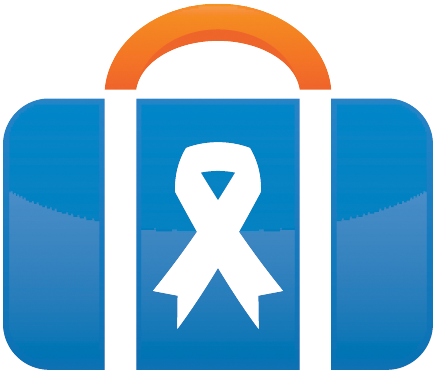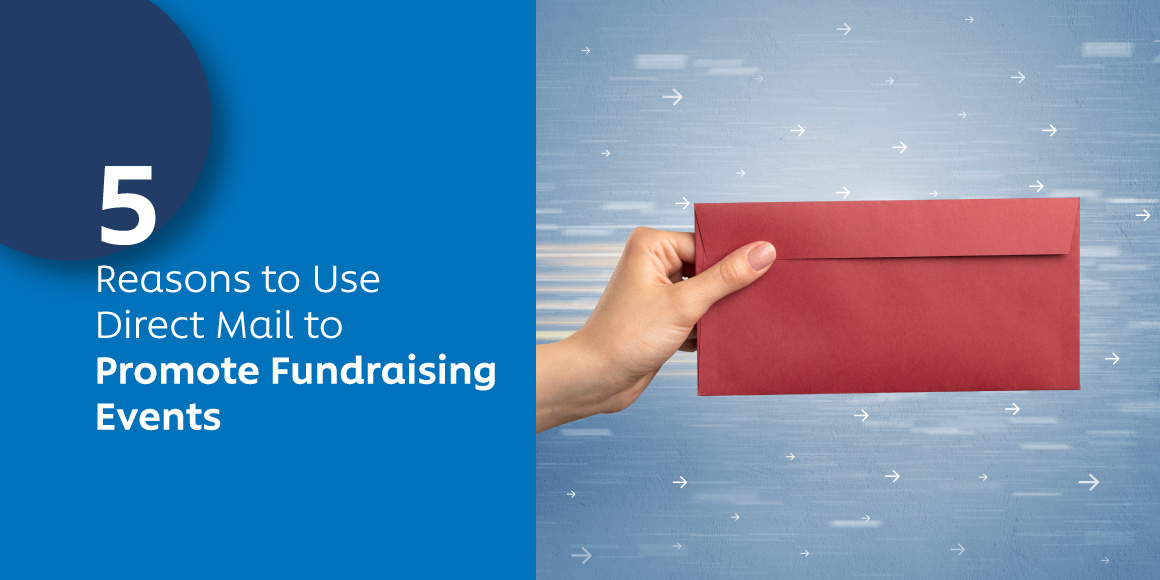Mail is making a comeback. Throughout the COVID-19 pandemic, friends have started sending letters to each other to keep in touch, pen pal exchanges have ramped up, and we’re doing more online shopping than ever. Even in the digital age, a handwritten note or special delivery can still have an impact.
For this reason, direct mail is a great way for your nonprofit to spread awareness about an upcoming event. Maybe you’re in the midst of planning a festival, a fun run, meet and greet, or even an auction and, by using direct mail, you can increase the visibility of your program.
While we are living in the digital age, direct mail is not dead. Direct mail is an effective choice for nonprofits because it:
- Reaches individual donors.
- Supports your other fundraising channels.
- Offers a unique marketing strategy.
- Uses eye-catching visuals.
- Promotes re-engagement.
Although it may appear that direct mail has a low response rate, it might be the final push for an on-the-fence supporter to sign up or donate. Incorporating direct mail fundraising into your marketing strategy can also have long-term benefits: you can determine what types of branding are most effective, encourage recurring donations, and direct more supporters to your digital platforms.
Let’s dive deeper into all the ways that direct mail can help promote your event.
1. Direct mail reaches individual donors.
One benefit of direct mail is already in the name: it’s direct. Through direct mail, you can put your marketing materials right in front of the donor in a tangible way. Whether you’re sending an invitation, a donation request letter, a thank you note, or a flyer announcing your event, direct mail ensures that your work ends up in your supporter’s hands.
Because direct mail focuses on specific individuals, you also have the option to personalize your messages and segment your audience.
Personalization (e.g. using the donor’s name or specifying their previous gift amount) can go a long way in acknowledging your contributor’s support. In fact, 60% of donors said that they appreciate a more personalized interaction with nonprofit organizations.
Direct mail can also be especially effective when you segment your audience. Segmentation is a process you can use to categorize your donors based on their different characteristics. By segmenting your audience, you can then adjust your marketing strategy to best fit the unique traits of each group. There are lots of ways to segment your audience, but you could try grouping your donors by:
- Age
- Gift size
- Interests
- Demographic information
- Previous levels or types of engagement
Segmenting your direct mail recipients is one of the best ways to increase your response or conversion rates and to continue cultivating relationships with your donors. By tailoring your content to individual supporters, you’re showing the donors that you’re paying attention to their needs and interests.
One last tip: be sure to keep these segmented groups fully updated. According to DNL OmniMedia’s donor segmentation guide, you should regularly review your categories to make sure they are still aligned with your goals and that each donor remains in the best category.
2. It supports your other fundraising channels.
Because so much communication nowadays happens online, you don’t want to rely solely on direct mail as your one form of outreach. However, direct mail is an invaluable channel for supporting your other engagement outlets.
Because you’re directly reaching the donor with your mailing materials, it’s much easier to guide supporters to your digital platforms. Try including your website and social media handles on your direct mail so that donors know where to go if they want to learn more. Here are some digital fundraising channels you can use alongside your direct mail campaign:
- Social media: Including your social media handles on your direct mail materials can give your recipients an easy way to continue interacting with your nonprofit. It might even be a good idea to centralize your fundraiser on a social media app. For example, you’ll make it easier for donors to contribute if they can do so through a Facebook fundraiser.
- Website: Your website is probably the first place that a donor will go to learn more about your work after receiving direct mail. A website is also a great place to continue building a brand consistent with your direct mail. Make sure that your website is optimized for mobile devices!
- Email: If your direct mail is compelling enough, your supporters might want to interact with your organization more regularly. Consider offering a newsletter subscription or allowing donors to sign up for email updates about your fundraising event.
Combining some form of digital communication with direct mail can engage your donors on multiple levels. For any fundraising event, the more visibility you have, the better. Connecting with donors across several platforms increases the likelihood that they will remember your message and engage with your event.
3. Direct mail offers a unique marketing strategy.
With so much emphasis on digital fundraising campaigns, many nonprofits assume that direct mail is less effective than other channels, which means there’s less competition for you.
By capitalizing on a less popular marketing strategy, you’re more likely to stand out to your donors. We receive a lot less direct mail when compared to the social media notifications, emails, and texts that come through our phones and computers every day. If you want to ask for a donation, for example, writing fundraising letters might be better than sending a digital communication, which might get buried under hundreds of other messages.
And if you’re hosting an in-person fundraising event, direct mail makes it easier for supporters to “save the date.” Rather than sifting through their inboxes or scrolling through social media to find the date, time, and location of your event, they can hang onto the handy piece of direct mail you sent.
4. It uses eye-catching visuals.
Have you ever opened your mailbox and found a decorated letter? Or received a flyer with an intriguing graphic? Compelling images are crucial for any type of marketing campaign, but especially for direct mail.
According to GivingMail, 75% of people say that they’re more likely to remember a brand or organization after interacting with a piece of mail. That’s because direct mail is tangible and highly visual. Here are some tips for including visuals in your direct mail:
- Less is more: You don’t want to include so many images that the supporter gets distracted or overwhelmed. Pick one or two interesting images and stick with those.
- Use bold colors: Remember that you want to stand out. Pick colors that align with your brand but still catch your supporter’s eye.
- Create something memorable: Is your logo particularly notable? Is a well-known person involved in your campaign? Do you have a surprising fact to share? Include any type of information that might pique your supporter’s interest.
- Incorporate your nonprofit’s branding: It is essential that your direct mail is consistent with the content across your other marketing channels. This consistency will help you build trust with your donors and ensure that they can easily identify your organization.
Powerful images are one of the best ways to encourage supporters to engage with your direct mail materials, and perhaps to seek out your other platforms. Remember, the most important thing you can do is catch your donor’s attention.
5. Direct mail promotes re-engagement.
If you’re finding that some of your donors have become disconnected from your nonprofit, direct mail might be the best way to re-engage them. A personalized invitation to your upcoming fundraising event, for instance, will show that you value that supporter’s attendance.
Maintaining your relationships with current donors is critical for sustaining your revenue throughout the year. Centering your marketing strategy around cultivating your current relationships can make a huge difference in building a continuous donation stream. In this way, direct mail can serve as a friendly reminder and can inspire donors to re-invest in your mission.
You can also use direct mail to plan your marketing strategy past the one-year mark. It’s relatively easy to track engagement with your direct mail campaigns, especially if your focus is on gathering RSVPs for your events. You can use the information from your direct mail campaign to see which ideas work and which ones don’t so that you can keep supporters engaged over time.
Ultimately, direct mail is a great option if you’re trying to encourage disengaged supporters to attend an event, especially if you take the time to highly personalize your ask.
The revival of pen pals and care packages proves that direct mail resonates with people of all ages, including your supporters. Overall, direct mail can increase the visibility of your upcoming fundraising event. When you take a personalized approach, use direct mail alongside other channels, and make an effort to stand out, your supporters are more likely to remember your event and even attend.
Takeaway: Regardless of the event you’re planning, direct mail is a memorable and successful way to spread the word.




